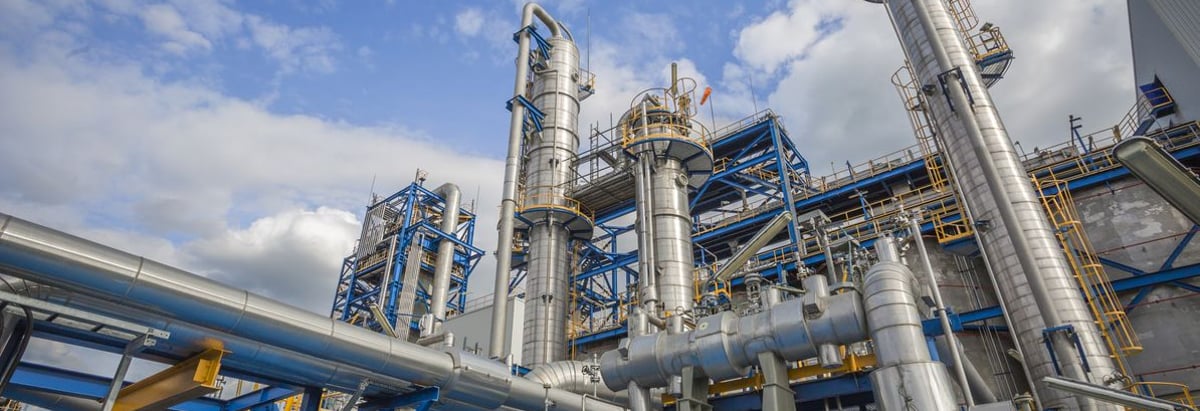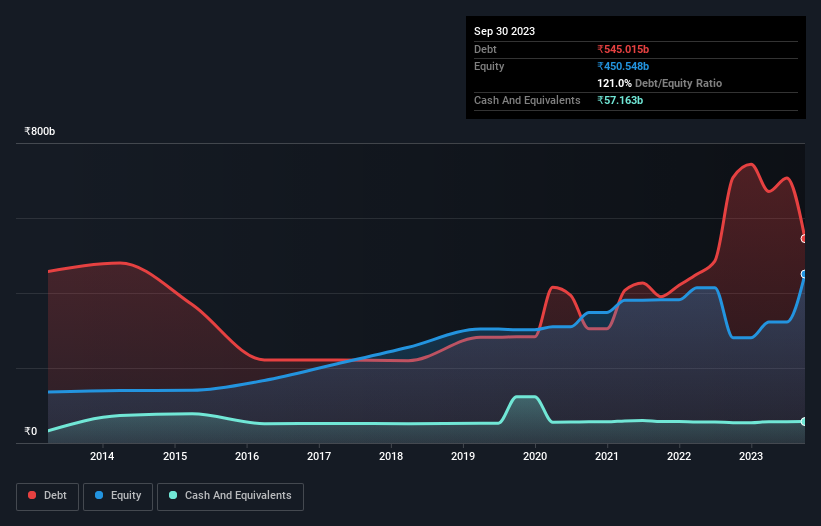- India
- /
- Oil and Gas
- /
- NSEI:HINDPETRO
Here's Why Hindustan Petroleum (NSE:HINDPETRO) Has A Meaningful Debt Burden

Warren Buffett famously said, 'Volatility is far from synonymous with risk.' So it might be obvious that you need to consider debt, when you think about how risky any given stock is, because too much debt can sink a company. We can see that Hindustan Petroleum Corporation Limited (NSE:HINDPETRO) does use debt in its business. But the more important question is: how much risk is that debt creating?
When Is Debt Dangerous?
Debt and other liabilities become risky for a business when it cannot easily fulfill those obligations, either with free cash flow or by raising capital at an attractive price. If things get really bad, the lenders can take control of the business. However, a more usual (but still expensive) situation is where a company must dilute shareholders at a cheap share price simply to get debt under control. By replacing dilution, though, debt can be an extremely good tool for businesses that need capital to invest in growth at high rates of return. The first thing to do when considering how much debt a business uses is to look at its cash and debt together.
See our latest analysis for Hindustan Petroleum
What Is Hindustan Petroleum's Debt?
The image below, which you can click on for greater detail, shows that Hindustan Petroleum had debt of ₹545.0b at the end of September 2023, a reduction from ₹707.5b over a year. However, it also had ₹57.2b in cash, and so its net debt is ₹487.9b.

How Healthy Is Hindustan Petroleum's Balance Sheet?
Zooming in on the latest balance sheet data, we can see that Hindustan Petroleum had liabilities of ₹786.5b due within 12 months and liabilities of ₹538.5b due beyond that. Offsetting these obligations, it had cash of ₹57.2b as well as receivables valued at ₹80.8b due within 12 months. So its liabilities total ₹1.19t more than the combination of its cash and short-term receivables.
This deficit casts a shadow over the ₹439.7b company, like a colossus towering over mere mortals. So we'd watch its balance sheet closely, without a doubt. After all, Hindustan Petroleum would likely require a major re-capitalisation if it had to pay its creditors today.
We use two main ratios to inform us about debt levels relative to earnings. The first is net debt divided by earnings before interest, tax, depreciation, and amortization (EBITDA), while the second is how many times its earnings before interest and tax (EBIT) covers its interest expense (or its interest cover, for short). This way, we consider both the absolute quantum of the debt, as well as the interest rates paid on it.
Hindustan Petroleum's net debt to EBITDA ratio of about 1.9 suggests only moderate use of debt. And its strong interest cover of 13.3 times, makes us even more comfortable. Notably, Hindustan Petroleum made a loss at the EBIT level, last year, but improved that to positive EBIT of ₹204b in the last twelve months. When analysing debt levels, the balance sheet is the obvious place to start. But ultimately the future profitability of the business will decide if Hindustan Petroleum can strengthen its balance sheet over time. So if you want to see what the professionals think, you might find this free report on analyst profit forecasts to be interesting.
Finally, a company can only pay off debt with cold hard cash, not accounting profits. So it's worth checking how much of the earnings before interest and tax (EBIT) is backed by free cash flow. Over the last year, Hindustan Petroleum actually produced more free cash flow than EBIT. There's nothing better than incoming cash when it comes to staying in your lenders' good graces.
Our View
We feel some trepidation about Hindustan Petroleum's difficulty level of total liabilities, but we've got positives to focus on, too. To wit both its interest cover and conversion of EBIT to free cash flow were encouraging signs. We think that Hindustan Petroleum's debt does make it a bit risky, after considering the aforementioned data points together. Not all risk is bad, as it can boost share price returns if it pays off, but this debt risk is worth keeping in mind. There's no doubt that we learn most about debt from the balance sheet. But ultimately, every company can contain risks that exist outside of the balance sheet. For instance, we've identified 2 warning signs for Hindustan Petroleum (1 is concerning) you should be aware of.
If you're interested in investing in businesses that can grow profits without the burden of debt, then check out this free list of growing businesses that have net cash on the balance sheet.
Valuation is complex, but we're here to simplify it.
Discover if Hindustan Petroleum might be undervalued or overvalued with our detailed analysis, featuring fair value estimates, potential risks, dividends, insider trades, and its financial condition.
Access Free AnalysisHave feedback on this article? Concerned about the content? Get in touch with us directly. Alternatively, email editorial-team (at) simplywallst.com.
This article by Simply Wall St is general in nature. We provide commentary based on historical data and analyst forecasts only using an unbiased methodology and our articles are not intended to be financial advice. It does not constitute a recommendation to buy or sell any stock, and does not take account of your objectives, or your financial situation. We aim to bring you long-term focused analysis driven by fundamental data. Note that our analysis may not factor in the latest price-sensitive company announcements or qualitative material. Simply Wall St has no position in any stocks mentioned.
About NSEI:HINDPETRO
Hindustan Petroleum
Engages in the refining and marketing of petroleum products in India and internationally.
Average dividend payer with moderate growth potential.

